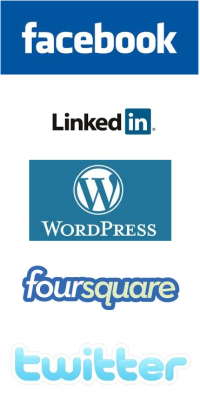 A report from the Keller Fay Group, reported by BrandWeek, delivers interesting results related to a year-long research study. According to the study, the hyper-social lives of teenagers helps brands. It turns out, teens are responsible for a “disproportionate amount of word-of-mouth about products and services.”
A report from the Keller Fay Group, reported by BrandWeek, delivers interesting results related to a year-long research study. According to the study, the hyper-social lives of teenagers helps brands. It turns out, teens are responsible for a “disproportionate amount of word-of-mouth about products and services.”
What amazes me from this study is not that teens talk about brands and are a powerful form of word-of-mouth marketing but that the majority of those discussions happen in-person. In a time in history when it seems teens are hyper-connected and the forgotten art of face-to-face communication is fading away faster than ever, a full 75% of word-of-mouth marketing generated by teens is done through face-to-face communications. Just 13% of word-of-mouth marketing by teens occurs online and only 10% happens via telephone.
Another point that stands out in the Keller Fay Group study is the finding that tell us which brands teens are talking about the most:
- Coca-Cola
- Apple
- Verizon
- iPod
- Ford
- Pepsi
- McDonald’s
- AT&T
- Sony
- Nike
It turns out that teens involved in the study engaged in “significantly more” word-of-mouth marketing related to “all categories” than the total consumer audience. Consider these statistics:
- 78% of teens engage in word-of-mouth marketing related to entertainment and media compared to just 57% of the general public.
- 67% of teens engage in word-of-mouth marketing related to technology compared to just 39% of the general public.
- 63% of teens engage in word-of-mouth marketing related to telecommunications compared to 39% of the general public.
- 59% of teens engage in word-of-mouth marketing related to retail and apparel compared to 38% of the general public.
- 63% of teens engage in word-of-mouth marketing related to sports, recreation and hobbies compared to 42% of the general public.
- 45% of teens engage in word-of-mouth marketing related to personal care and beauty compared to 26% of the general public.
Of course, it’s important to remember that a teen’s audience is typically not as broad as an adult’s, and a teen’s reach is not as wide as an adult’s. Furthermore, a teen’s sphere of influence and credibility is not often well-established as an adult’s might be. Therefore, the power of a teen’s word-of-mouth marketing is relative to his or her reach and authority. However, for brands that target teens, this data should be considered quite compelling and used to support budget requests for brand-building, social media marketing, content marketing, and other activities that elicit word-of-mouth marketing.
What do you think?
Image: stock.xchng
 Wildlife Trust is a nonprofit organization that began in 1971 with a focus on wildlife conservation, but over the past 20 years, the organization has expanded its focus to include conservation medicine based on research about the relationships between ecosystems and animal and human health around the world.
Wildlife Trust is a nonprofit organization that began in 1971 with a focus on wildlife conservation, but over the past 20 years, the organization has expanded its focus to include conservation medicine based on research about the relationships between ecosystems and animal and human health around the world.
 In a recent article on
In a recent article on  Since
Since  In a
In a